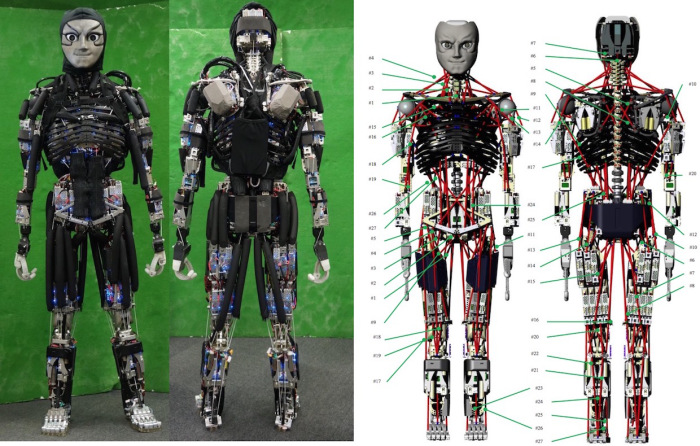As I sat at the edge of my seat watching HBO’s remake of the 1970s robot series, Westworld, I found myself strangely sympathetic to the robots vs. the “deplorable” human guests. After turning off the TV, I lay awake wondering how close we are from 3D printing humanoid robots capable of entertaining our every whim.
My insomnia led me to turn the TV back on and, ironically, flip to Charlie Rose interviewing a robot:
- 3D Printing Robots
HBO’s Westworld begins inside Dr. Robert Ford’s underground laboratory, where the assembly line of humanoids are 3D printed in a frame inspired by DaVinci’s Vitruvian Man. The idea of printing robots is not novel; in fact, this month researchers at MIT’s Computer Science and Artificial Intelligence Laboratory have taken the next step with their “Programmable Viscoelastic Material” that allows humans to digitally program every part of a 3D-printed object, such as a robot.
Viscoelastic’s — like rubber and plastic — are inexpensive, compact and readily available, but in the past have proven hard to customize to specific levels of damping, which reduces the ability of such “skin-like” surface to rebound after impact. However, MIT’s new technology can be controlled by the amount of fluid injected into the material — more fluid, more bounce. Like Dr. Ford’s vision, the viscoelastic parts can be utilized to 3D print the robot itself as the added layer will not only protect sensors inside, but it will be easier to control the robot’s agility.
In the words of a MIT researcher, “our process allows you to have mechanical differences throughout the body of the robot.”
2. Super Robot Strength
One of the biggest phenomenas in Westworld is the durability of the robots to take an endless amount of physical abuse from their human overlords. A big hinderance to deploying active humanoid robots has been overheating of parts. When we use our muscles, we need to actively cool them via sweat. Similarly, humanoid robots place near-constant high torque demands on their motors that generate so much heat that performance is constrained with use.
At the IEEE/RSJ International Conference on Intelligent Robots and Systems (IROS) this week, Japanese researchers presented a novel idea of how to cool humanoid robots by making them sweat. Using a 6-foot musculoskeletal humanoid, named Kengoro, researchers from the University of Tokyo invented an efficient water-based cooling system. The problem was that Kengoro was already stuffed to the gills with structural components, circuit boards, gears and 108 motors and there was simply no room to add active water cooling with traditional tubes, fans and a radiator. The researchers started looking at how they could make better use of Kengoro’s existing components and they came up with the idea of using the robot’s skeletal structure (its metal frame) as a coolant-delivery system.
The approach goes beyond just circulating water through the robot’s frame. The researchers decided to allow the water to seep out through the frame around the motors to cool them evaporatively. In other words, the robot sweats. Kengoro can run for half a day on about a cup of deionized water, although just like you, it has to keep itself hydrated for the cooling to be effective, especially if it is working hard. Testing shows that this method of cooling works three times better than air cooling and significantly better than just circulating water through the interior channel, although it is not as effective as a traditional radiator yet. In practice, this means that Kengoro can run at full power longer, enabling it to do pushups for 11 minutes straight without burning out its motors.
“Usually the frame of a robot is only used to support forces,” lead researcher Toyotaka Kozuki said. “Our concept was adding more functions to the frame, using it to transfer water, release heat, and at the same time support forces.” In translation, we are one step closer to humanoids working amongst us.
3. Fulfilling Every Desire
A big part of Westworld is the female robots led by the character Maeve Millay, the Madam. RealDoll, a leader in companion robots, announced that they are now investing in a new technology that will heat up robot bodies so the synthetic skin is warm to the touch. According to CEO, Matt McMullen, “from an intimacy perspective, when you touch the material it’s very soft and smooth, reminiscent of skin, but one of the things you notice is that the temperature is wrong.”
If you are “creeped out” by RealDoll, you are not alone. McMullen’s product has already created a huge controversy with many demanding a complete ban on submissive robots. Advocates exclaimed that such products represented “the end of intimacy,” leading to “the impending demise of the human species” and prompted a grass-roots movement for the Campaign Against Sex Robots. In its mission statement, the organization equates the relationship between a robot and owner to that of a john and a non-consenting prostitute, warning that such robots will “reduce human empathy,” “reinforce power relations of inequality and violence” and “sexually [objectify] women and children.”
I need to remind my readers that Donald Trump is guilty of all the above, and as far as we know, Melania is not a robot (even though there is a striking resemblance).
Image credit: CC by Samantha Cristoforetti





